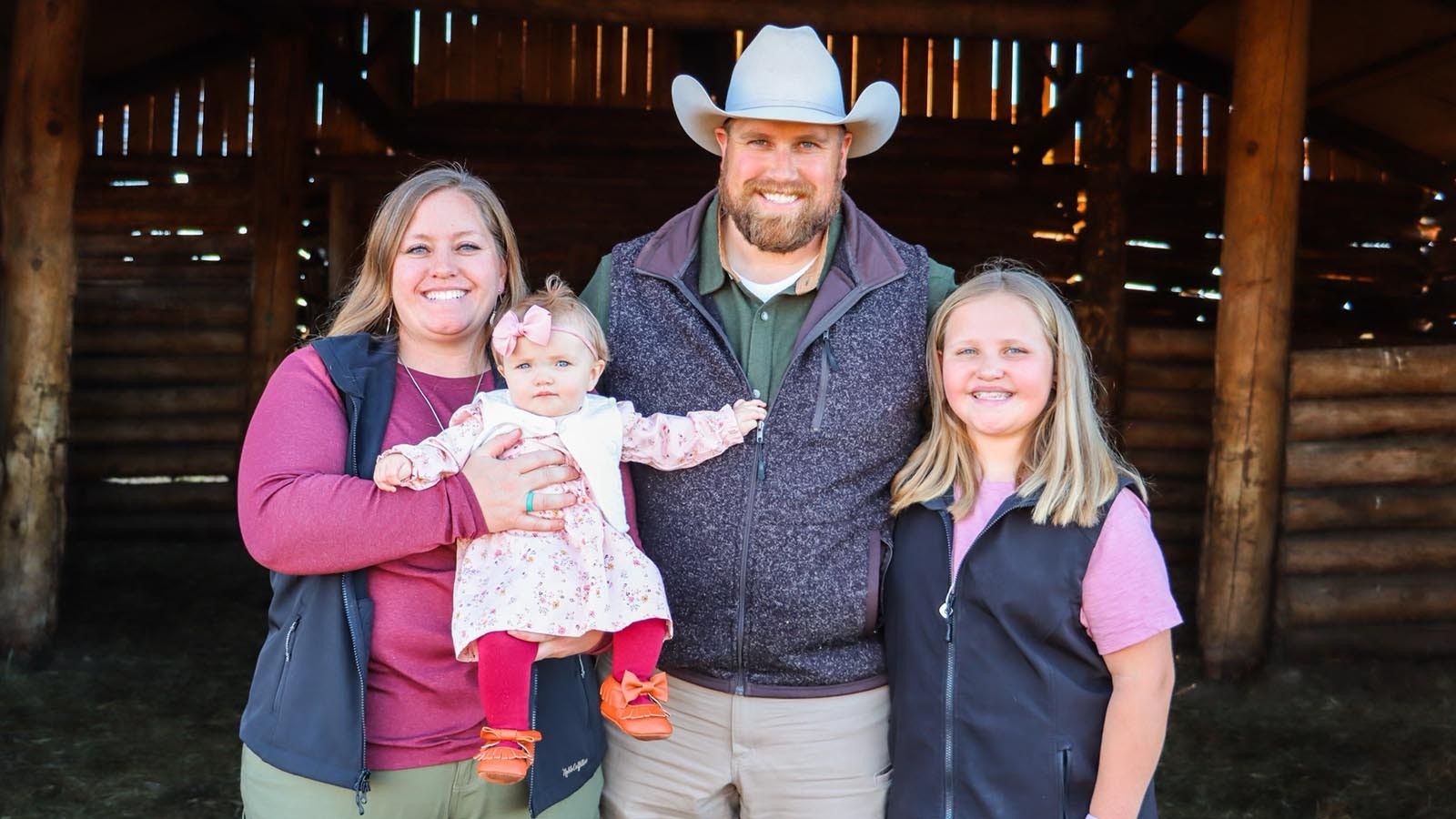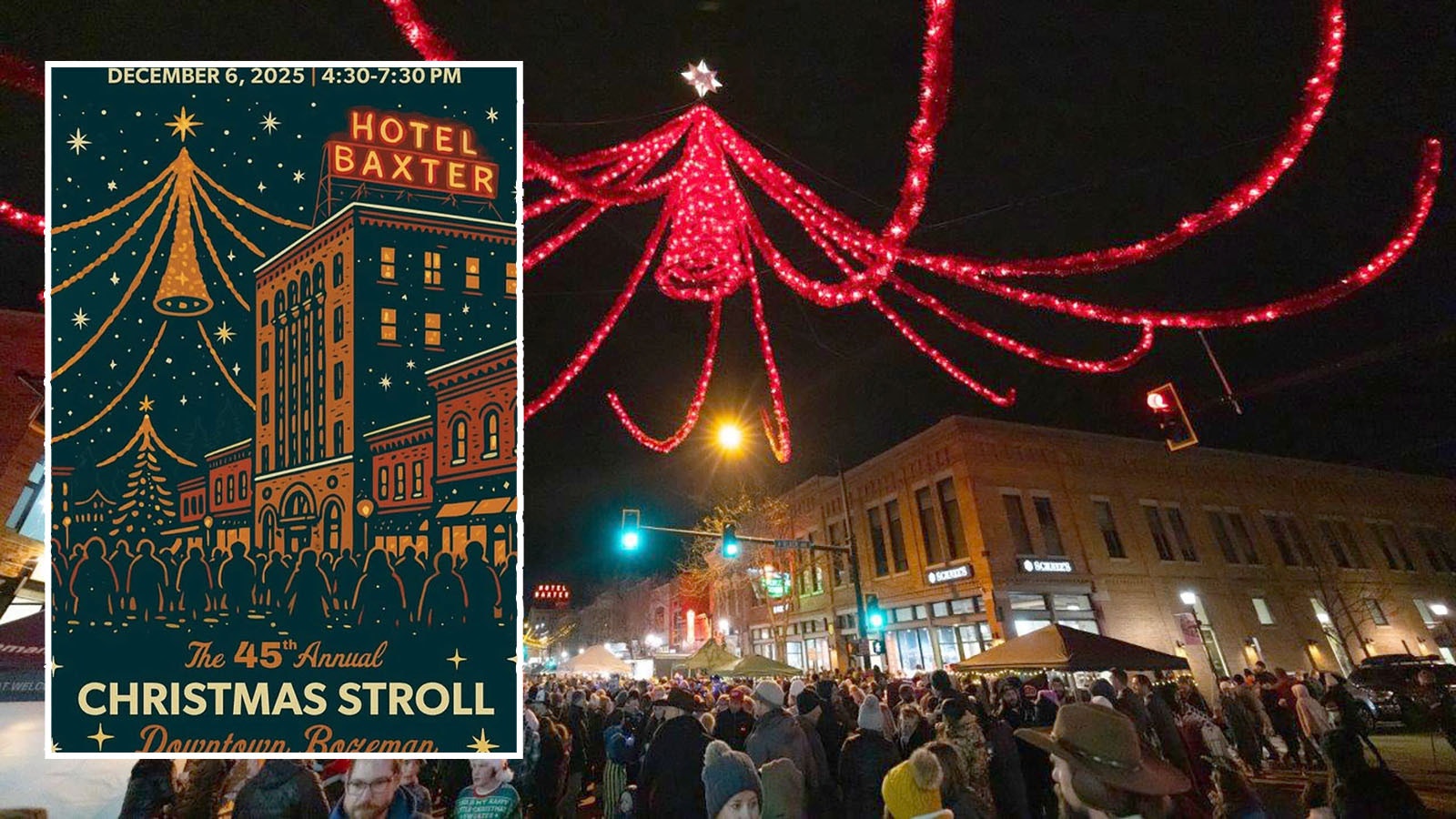Encampment rancher and businesswoman Lora Webb Nichols, famous for her photography, was one of the first friends a 19-year-old Nancy Anderson made when she came to Wyoming from Virginia.
Her plans were solid. She was going to become an old maid teacher for the school at the Beer Mug Ranch north of Hanna.
Fortunately for her, life doesn’t always go as planned.
Anderson not only made new friends like Nichols, but she also met her future husband, living a great life with him in Coyote Canyon for 52 years.
During all that time, Anderson remained great friends with Nichols who was, from almost the beginning, like a member of her family.
Anderson was even with her friend when Nichols died in 1962.
But Anderson didn’t truly get to know her friend until after Nichols' death.
That’s when she really started studying the thousands of photographs her friend had taken over her lifetime, as well as the corresponding diary entries.
She wrote daily for 65 years, starting when she was just 13 years old and continuing to her last day of life.
Looking through her friend’s eyes, Anderson began to see a brilliant and sensitive soul, looking thoughtfully at the world.
What that created was unique — a not-often-seen female vantage point of the West at a time when the West was busy making itself into a gritty, mostly male, thing of legend.
Nichols’ photos, unlike most of what photographers of the time period took, also weren’t stiffly posed studio setups, where everyone was wearing their Sunday best.
Nichols took candid shots of real people, wearing their real clothes, living their real lives.
A Life-Changing Birthday Present
Nichols received her first camera from her fiancé and first husband, Bert Oldman.
He’d come to Encampment during the copper boom and wooed his bride-to-be with a Kodak camera hand-carried to her door on her 16th birthday.
The camera was an instant hit and became an integral part of Nichols’ daily life.
She would ultimately divorce Oldman a decade later, not long after their second child was born, complaining that he often neglected his family, leaving them to fend for themselves for long periods of time.
But she never put down the camera. It was her eye on the world.
From 1899 until her death in 1962, Nichols took about 23,500 photographs of life bustling all around her.
Absolutely Breathtaking
Not all of Nichols’ subjects were women, but many were.
She took intimate photographs of them, capturing their quiet tenacity as well as moments of tenderness and vulnerability — all at a time when few thought to record any history of women at all.
The women who look out from Nichols' photographs are haunting and compelling.
Like the photo of Nichols’ friend Nora Fleming nursing her baby in the sun. One breast peeks out from her bodice while she gazes with apparent mischief in her eye at the photographer.
There’s another of her friend Mary Anderson bending at the waist to comb out hair that’s almost as long as the girl is tall.
She did all that to pile the freshly combed hair back on top of her head in a tight bun, away from public view.
There are whimsical moments, too, like her friend Lizzie leaning on a crutch while a pet cat perches precariously on Lizzie’s hip, nibbling delicately at a treat held high.
The moment of levity contrasts with a starker backdrop of cut timber and otherwise empty landscape, speaking to much work ahead in a pioneer community that was still building itself from the ground up.
“I mean, this collection is an endless source for interpreting Wyoming during her time frame,” Anderson said. “Endless. Sixty-five years of diary, almost 24,000 images. There are diaries, letters, objects. The collection is absolutely breathtaking.”
As If By Incantation
Anderson and her late husband, Victor, helped lead a charge to preserve Nichols’ work in the 1990s, after it was discovered that the chemicals that had been used to develop these early photographs were likely to destroy them in time.
As luck would have it, an educator from Chicago who had retired to Hanna happened to know exactly what Anderson needed to do to get started.
“Every time we needed somebody to show us how to do something or do something for us, they just appeared, as if by some kind of incantation,” Anderson said. “The project was blessed with so many people. I wish I could name them all.”
Saving her friend’s photos was one thing. Making them more accessible to researchers and the public has been another.
That’s a journey Anderson is still undertaking, but a great deal of help came from an accidental encounter — another of those seemingly summoned to the cause, as if by incantation.
Nicole Jean Hill, a professor of art with Humboldt State University, was visiting the area as an artist in residence at the Brush Creek Foundation for the Arts.
She discovered the photos on a day trip to Encampment, which she visited because she loved the town’s name.
While visiting the Grand Encampment Museum, she noticed they claimed to have a photo collection with 24,000 photos by one pioneer photographer, and a woman at that.
At first she didn’t believe it. It seemed like a typo.
The largest pioneer photography collection she had ever heard of was that of central Nebraska’s Solomon Butcher. His was just 3,000 negatives.
To think a woman had taken so many photographs, starting at the age of 16, seemed incredibly implausible.
But it was also incredibly intriguing, and that brought her back to Encampment to find out more about the Nichols collection.
Eventually, through her work, the digital format of the collection was transformed to a more accessible one.
Arrangements were also made for the negatives themselves to be held at the Wyoming University’s American Heritage Archive.
Saving The Heap-O-Livin' Home
Anderson hasn’t stopped working to bring Nichols’ work to light.
She and other volunteers are now working to restore and preserve Nichols’ home, which Anderson bought in 1962 after her friend died.
“We hope to make this property something that really honors Wyoming’s pioneer photographer,” Anderson said. “We want to allow people to step back into Lora’s time and her ambiance.”
One possibility is to create an artist’s residency. That will be difficult, Anderson acknowledged.
“Generally, artist residencies are undertaken by people or groups with lots of means,” she said. “But I think it’s just really important to kind of prove that a group of people, very usual people, in a Wyoming small town can undertake such a thing.”
Long-term, Anderson hopes to see a gallery of Nichols’ work as part of the property so that visiting scholars can see where she worked and what she produced in the same place.
In addition to preserving the home, Anderson and her group have succeeded in listing the house in Encampment on the National Register of Historic Places.
A new sign was just installed at what Nichols called the “Heap-o-Livin’” home.

What Holds Wyoming Together
Nichols’s favorite quote was always, “All that holds Wyoming together is baling wire and capable women,” Anderson said, adding that her friend personified that.
Nichols’ home is still largely just as it was at the turn of the century, Anderson said, with original woodwork, the fireplace, and a staircase.
“It’s a marvelous old Queen Anne, eclectic Victorian house,” she said. “It has a wide front porch with pillars. It’s a small house, although when it was built, it was kind of the Nob Hill region.
"It was up in the more elite part of Encampment, shall we say.”
Anderson’s favorite features in the home are its staircase and fireplace, which she calls the “glories” of the house.
Indoor plumbing has been added as part of the preservation work, along with a remodeled kitchen. But the bathroom still has its old, ornate clawfoot iron tub, and the diamond-shaped windows are still original.
“The renovations have mostly been to just accommodate living in it,” Anderson said. “We try to leave things untouched. We’re just bringing out what’s already been there.”
Unexpected Knocks
There’s buzz around Nichols’ work not just in America, but Europeans are taking note of the female photographer who made so many compelling and artistic images behind the curtains of the authentic West.
“All of the publicity has brought us researchers, and they’re currently working on Lora Webb Nichols projects,” Anderson said. “And they did come and just stay at Encampment.
"Some of them were even here in the house. It’s just given us good wind to our sails to see that, worldwide, Lora holds great interest.”
Hill, for one, has written a couple of books with images by Nichols along with words from her diaries.
Meanwhile, a researcher from Paris has been to Encampment, making 50 hours of film footage, including interviews with many of the people living in the vicinity.
“They are a prize-winning couple in historic documentaries in Europe,” Anderson said. “So we’re very excited she chose Lora for this major project.”
There’s also been a historian from Poland who has created an exhibit in her country that features Nichols’ work.
“A couple of the people in our group actually went to Poland and presented before the film community there,” Anderson said. “So we’re already out there, and we really have exciting things going.
"Nicole’s recent book, which has just arrived here, has had glowing reviews internationally.
So there’s a lot to celebrate, and we celebrate by saving this property,” Anderson continued. "There will be nothing like preserving Lora in place, and that’s what we’re trying to do.”
As the buzz has been building, Anderson has even had strangers showing up at her door in Encampment, hoping to see the place where Nichols lived and worked.
“I know I’m going to have to keep the floor mopped,” Anderson said, chuckling a little bit. “But I would welcome them. They’d need to visit the museum, and we need to arrange trips to the places where Lora did her photographs.”
Many of the places Nichols favored for her photography, including her favorite photography rock, are still in the area.
That's something Anderson hopes will be as endless as the Nichols’ photography collection, when it comes to this new and rich vein of tourism gold in Encampment.
Renée Jean can be reached at renee@cowboystatedaily.com.














